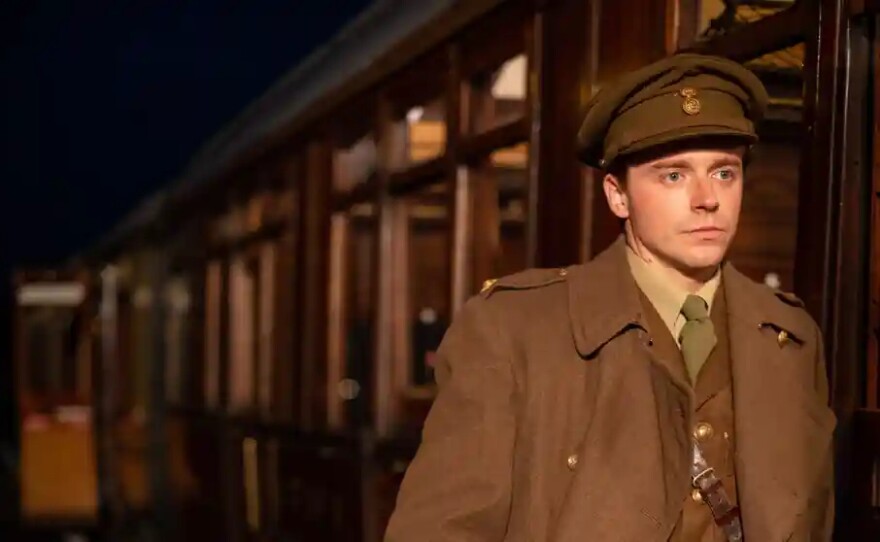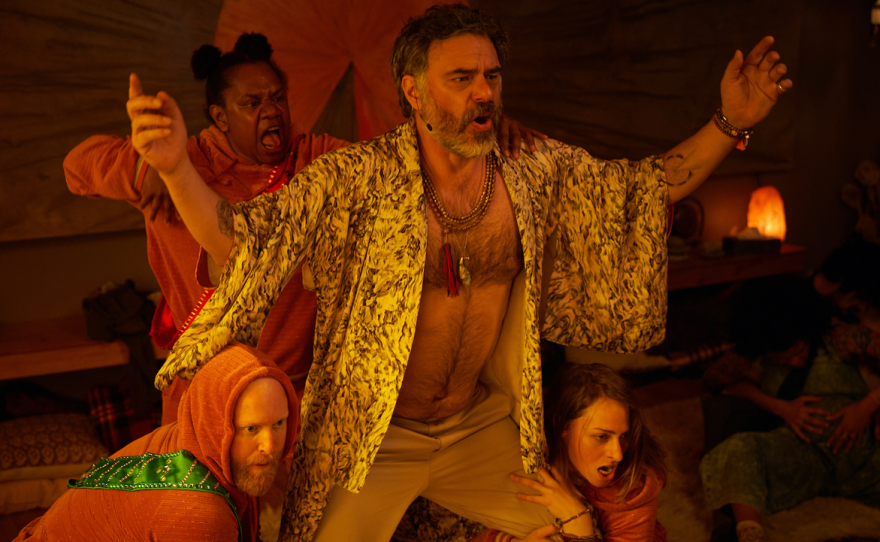"Jurassic World: Dominion" is the Hollywood behemoth opening this weekend, but, if that tired action film formula fails to excite you, there are exciting independent film choices still available.
'Jurassic World: Dominion'
OK, let's get the 8-ton dinosaur in the room out of the way first.
Dinosaurs are cool. That’s a given. And the first "Jurassic Park" film gave us the wonder and some of the terror of what it would be like to exist alongside these magnificent creatures. But, as computer-generated effects have improved since that film’s debut in 1993, dinos have become easier to render and now populate the franchise with less and less of that sense of awe and spectacle.
In the latest sequel, "Jurassic World: Dominion," we get an onslaught of prehistoric beasts as the film goes bigger but decidedly not better. The dinosaurs have simply become background extras without much personality or even real menace. Blue, the velociraptor, and her baby get some screen time, and we get a new dino terror in the Gigantosaurus (you might remember him from TheNAT), but they fail to be memorable. We can barely distinguish Gigantosaurus from the old T. rex because the film fails to give them any personality. During brief glimpses, you cannot tell one from the other: They look and move the same way.
And that is a shame because these dinosaurs are cool and there is even some interesting rendering of seven new dinosaurs not previously showcased in the franchise, including a Pyroraptor with feathers. The Pyroraptor, with its fierce talons and red feathers, reflects a scientific perspective that was not prevalent when Steven Spielberg made the first "Jurassic Park." So there are opportunities in this new film to marvel at these new creature designs, but those chances are squandered as the film instead chooses to follow dull and cliched human melodrama and greed.
The film brings back key original cast members — Laura Dern, Sam Neill and Jeff Goldblum— which only reminds us of better times. The film essentially sets up two parallel storylines, old cast and new cast — Chris Pratt, Bryce Dallas Howard without her heels — that converge with lots of hugging and mandatory sharing of respectful nods.
"Jurassic World: Dominion," pedestrianly directed by Colin Trevorrow, feels as long as the Jurassic period — OK, maybe just the Triassic — and assaults you with a constant barrage of action but without any of it feeling more engaging than a theme park ride. And perhaps that’s all "Jurassic World: Dominion" is, a blueprint for Universal’s next attraction, because it certainly doesn’t hold up as a movie even with the cool factor of dinosaurs.

'Crimes of the Future'
The disappointment of "Jurassic World: Dominion" prompts me to catch up on a couple independent films that opened last week, David Cronenberg's "Crimes of the Future" and Terence Davies' "Benediction." The irony here is that these filmmakers are almost twice as old as Trevorrow, but it is Trevorrow whose work feels tired and old. Cronenberg at 79 and Davies at 76 are displaying the bold creativity and brash innovation of youth. Or perhaps they have never lost their artistic creativity to try new things and have masterfully paired that with a mature sense of craft. Trevorrow, on the other hand, has never displayed the audacity to break or even bend any rules to give us something fresh.
Cronenberg's "Crimes of the Future" is stunning, and is firmly on my list as one of the best films of the year. It feels like a return to form for him, but with a fresh twist. Interestingly, Cronenberg made a short feature also titled "Crimes of the Future" at the beginning of his career in 1970. That film and his new one share the same title but offer very different stories. What is amazing about the way these films bookend his career is how they are both immediately recognizable as Cronenberg films from almost any single frame and reveal his careerlong fascination with certain ideas. But they also reveal how he continually looks at those ideas from different perspectives.
Returning to the title of his early film also makes sense if you view this latest film as kind of a meditation on Cronenberg's career from the master himself.
The film is set in a dingy, rundown future where humans appear to be adapting to their increasingly synthetic environment. Bodies are changing and undergoing mutations that scientists and the government are trying to keep track of. This "Accelerated Evolution Syndrome" also raises issues of transhumanism. Within this world is Saul Tenser (Viggo Mortensen), a performance artist who grows new and unexpected organs and then uses them in his art. His performance art partner, Caprice (Léa Seydoux), removes these organs in spectacular theater pieces involving an H.R. Giger-looking autopsy machine.
Cronenberg is returning to the kind of body horror that won him acclaim and notoriety, but from a new angle. In this futuristic world, pain has essentially been eliminated, making almost all surgery, body modification or mutilations painless. This is fascinating on a number of levels. By removing the concept of pain from the body horror, he is also removing one of the things that often shocked people. The perceived pain and cruelty some people read into body horror can be what has led some audience members to flee Cronenberg's films. But here Cronenberg seems to be making the body horror pure and clean so that maybe people can perceive the perverse beauty that he sees in it and that he tries to explore in his art.
And, of course, he also pushes some buttons by linking body horror with eroticism. That is always guaranteed to offend someone. But Cronenberg does it with such sly gusto and bold style.
He also takes a jab at those who may try to imitate his art. Saul notes of another performance artist, who has grafted human ears all over his body, that the ears “don’t even do anything, they’re just for show.” That artist is merely addressing the surface while Saul (and read Cronenberg) are going for something deeper and more internal.

I have seen some people post reactions to the film as being disturbing or horrific or grotesque. People at Cannes were apparently disgusted or grossed out to the point of leaving the cinema. But I have to confess that my initial reaction to the film was how beautiful it was in the way only Cronenberg can deliver it. Saul and Caprice's devotion to their art and the depth to which they discuss it and consider its purpose and impact is fascinating and almost has a religious quality to it. Saul even dresses in monklike robes. And, for Saul, there is an added layer of discussion about the need for an artist to feel pain: Does an artist need to suffer?
There is so much in this film to savor that I look forward to seeing it again. The film reunites Cronenberg with two longtime creative collaborators, composer Howard Shore and production designer Carol Spier, to make this film just spectacular on-screen. The soundscape is seductive, creepy and richly textured. The production design is simple yet evocative and with audacious strokes of genius in terms of some of the futuristic technology that harkens back to such earlier Cronenberg films as "eXistenZ."
This kind of Cronenberg film just makes me happy. I love seeing that a 79-year-old filmmaker can still be radical and transgressive. He is taking far more risks and pushing the envelope more vibrantly than most younger filmmakers. So "long live the new flesh" as only Cronenberg can imagine it.

'Benediction'
Like Cronenberg, Terence Davies is a filmmaker who just keeps getting better with age. And both directors deliver films that can make going to the cinema a transcendent experience. In "Benediction," Davies looks to the real life of famous 20th-century war poet Siegfried Sassoon.
The film moves back and forth in Sassoon's life, with Jack Lowden playing the young man and Peter Capaldi (absolutely brilliant) as the aging one. The film shows how Sassoon's experiences in World War I led to not just the themes of his poetry but to a political activism against war. The film also explores his efforts to find peace and salvation.
"Benediction" is exquisitely rendered with the narrative driven by the emotional state of the character and the flow of memory rather than any linear structure. The performances are sublime, and Davies knows how to place those performances in the appropriate time periods with precise and elegant detail. Davies even experiments with some computer-generated effects that are seamlessly integrated into his film.
I knew nothing of Sassoon going into this film, but now I am eager to check out his work, some of which is presented in the film. "Benediction" is both beautiful and heartbreaking, and well worth seeking out.

'Nude Tuesday'
And let me end with absolute silliness, "Nude Tuesday," which is part of the Tribeca Online Premieres this Saturday.
Laura (Jackie van Beek) and Bruno (Damon Herriman) have reached a crisis point in their marriage. So Bruno’s mom sends the couple to a retreat meant to reignite a sexual spark in their marriage. Reluctantly, the couple accepts and ends up at the resort overseen by the eccentric guru Bjorg (the always weird and wonderful Jemaine Clement).
The gimmick here is that the characters speak in a made-up language, with their dialogue "transcribed" by English comedian Julia Davis. The film is being presented as a wildly inspired kind of Mad Lib improv, but it feels very structured and not quite as loony as its marketing campaign promises.
It is a fun sendup of those cultish self-help new age gatherings, but with the novelty of not being in a real language. If the whole thing was improvised, it feels very linear and neatly designed. I think the comedy would have played just as well if the whole film were spoken in English.
But, if you are seeking a goofy escape with some flawed but likable characters, then "Nude Tuesday" is a perfect choice, in any language.










